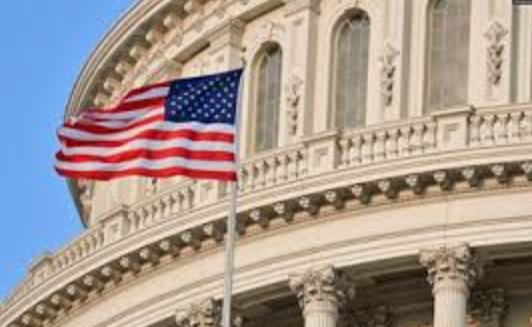The US has entered a state of shutdown: what it means
1 October 10:08
The White House Office of Management and Budget has issued an official statement that starting at midnight, the United States will be in a state of shutdown – a temporary suspension of government agencies due to lack of agreed funding. This was reported by "Komersant Ukrainian" with reference to the BBC.
What is a shutdown and why did it happen?
In the United States, since the late nineteenth century, there has been a law that prohibits the work of federal authorities if they do not have funding. A shutdown (literally “closure” in English) occurs if Congress fails to approve and the president fails to sign off on funding for these bodies.
Unlike Ukraine, the United States does not have a single budget law. Different bills are required to fund departments or programs, 12 in total. It often takes a long time for them to be approved by both chambers and the White House. That is why they are usually not all approved by October 1, when the new fiscal year begins in the United States.
If the White House and Congress (or even congressmen among themselves) cannot agree on a continuing resolution, a shutdown will begin at 00:01 on October 1 (07:01 Kyiv time).
Why the threat of a shutdown arose this time
This time, the shutdown was triggered by a political conflict between the Republican majority in the Senate and House of Representatives and the Democratic Party, which refused to support the budget without additional conditions.
In the Senate, the Republican bill that would have avoided the budget crisis failed at the last minute. The document garnered only 55 votes, while the rules of procedure require a minimum of 60 votes for adoption.
The non-standard majority requirement forces Donald Trump’s associates to negotiate with Democrats. However, there is no compromise: the opposition is demanding an increase in spending on health insurance programs, while the ruling party rejects these amendments.
What services have been suspended
Most federal government employees are going into forced unpaid downtime. For example, during the 2018 shutdown, 800,000 people were affected. Only those involved in critical areas, such as law enforcement and air traffic controllers, remain at work.
During the shutdown, numerous federal programs and services are suspended:
- Federal employees: about 750,000 people are furloughed without pay.
Patterson House - National parks and museums: closed to the public.
- Assistance programs: may be suspended or restricted, including SNAP (food assistance) and WIC (maternal and infant care).
U.S. Representative Ami Bera - Litigation: More than 86,000 immigration court hearings have been postponed.
U.S. Representative Ami Bera - Healthcare: Some Medicaid programs may experience delays.
Consequences for ordinary Americans
“The shutdown leads to the suspension of a number of government programs:
- food assistance,
- federal daycare centers,
- food inspections,
- student loans,
- and national parks.
Airlines warn that delays in payments to air traffic controllers may lead to flight disruptions.
What works during the shutdown?
Despite the suspension of many services, some critical functions continue to operate:
- Security and defense: military, border guards, police, and emergency services continue to operate.
- Medical services: Hospitals and emergency medical services are functioning without changes.
- Pensions and social benefits: payments under the Social Security and Medicare programs continue. U.S. Representative Ami Bera.
How long do shutdowns last?
Government shutdowns in the United States are not a new phenomenon.
- In 2018-2019, during Donald Trump’s presidency, the shutdown lasted 35 days, which is a record.
- In 1995, under Bill Clinton, it lasted 21 days,
- In 2013, under Barack Obama, it lasted 16 days.
- Ronald Reagan’s presidency had the most shutdowns – eight, but they were all short-lived.
How does this affect the economy?
According to the Congressional Budget Office, the shutdown could cost the U.S. economy up to $400 million a day due to the shutdown of federal agencies.
At the same time, members of Congress will continue to receive their salaries, as provided for by the US Constitution. The military will continue to work, but their pay will be postponed until the shutdown is over.
For example, in 2018-2019, the shutdown resulted in $11 billion in losses.
How long will the shutdown last?
The shutdown will last until Congress passes a budget bill. President Trump has called on Democrats to support funding the government without additional conditions, but no compromise has been reached so far.
Market reaction
Despite the political crisis, global financial markets remain calm. Investors view the situation as temporary.
Asian stock exchanges are showing mixed dynamics: Japan’s Nikkei 225 is down 1%, while India’s Nifty 50 rose after the central bank’s decision to keep rates unchanged.
In the US, the Dow Jones index reached a historic high the day before, but stock futures indicate a possible drop on Wednesday.
The price of gold exceeded $3,872 per ounce, and the dollar weakened to a weekly low.









